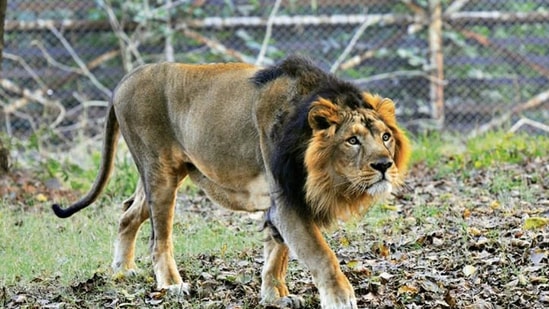 |
| Asiatic lion |
In India's Madhya Pradesh state, there is a protected area called Kuno Palpur National Park. This little-known wild place came into spotlight as a possible reintroduction site for the Asiatic lion, whose numbers currently estimate at around 674 individuals in Gujarat. It has also been chosen as a relocation site for the cheetah, which has been extinct in the country for over seventy years. But recently, a debate has been triggered among wildlife experts regarding the relocation of these two big cats. This debate came in response to the devastation of Cyclone Tauktae on Gir Forest National Park, the current home of the lions. Although no lion was killed, experts stressed that the cyclone served as a warning to state governments that lions need a second home outside Gujarat. In addition to Cyclone Tauktae, a canine distemper outbreak in September 2018 killed 27 lions and forced 37 into quarantine. Data from the Gujarat forest department has shown that lion deaths as a result of human-lion conflicts are increasing. As per information, 154 lions died in 2019 and 159 in 2020 and about one third of them were possibly due to conflict with people. In addition to lions, arguments were also made in favor of and against relocating cheetahs into Kuno Palpur National Park. Those against the relocation project argued that the protected area was established only for lions, whereas those in favor stressed that it would help protect India's grasslands and create new habitats for wildlife.
 |
| A cheetah in Africa |
Although I understand the reason for this debate, I also believe that it hinders the progress of India's lion and cheetah relocation projects. Even though the Supreme Court had issued an order to bring lions into Kuno Palpur National Park some years ago, no action has been made as of now. I strongly suggest that lions should be translocated to Kuno Palpur National Park and closely monitored to see how well they are adjusting to their new place. I would also suggest that same should be done for Africa's cheetahs when they are brought to India. Both of these big cats once coexisted with one another in the past centuries before disappearing throughout much of their historic range. In my opinion, this would be a perfect opportunity to observe and study lions and cheetahs coexisting with one another in India for the first time in centuries. I also believe this would help in understanding the relationship between the two cats and how it will help in their conservation. Studying the coexistence between lions and cheetahs will help determine whether the big cats can survive on the long-run in India or should be kept separate. Regardless of the coexistence issue, I think no time should be wasted in debates at this point and at least the project to translocate lions should be undertaken to establish another population in India.
No comments:
Post a Comment